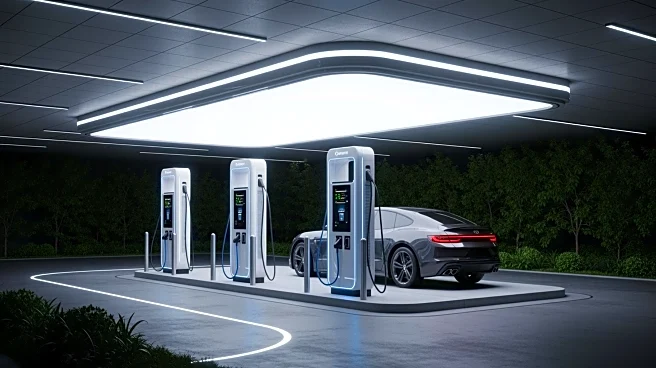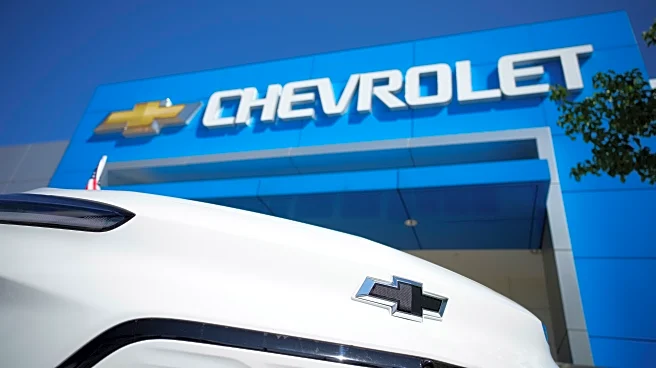What's Happening?
General Motors (GM) has revised its full-year adjusted earnings forecast following a strong third-quarter performance that exceeded Wall Street expectations. The automaker anticipates a reduced impact
from tariffs, lowering its expected gross impact from $4 billion to $5 billion down to $3.5 billion to $4.5 billion. This adjustment comes after President Trump extended tariff relief for domestic automakers, allowing a rebate on auto parts until 2030 and imposing a 25% import tax on medium and heavy-duty trucks starting November 1. GM's CEO, Mary Barra, highlighted the company's strategic investments in domestic manufacturing, including $4 billion to enhance production facilities in Tennessee, Kansas, and Michigan, aiming to produce over 2 million vehicles annually in the U.S. Additionally, GM is investing nearly $1 billion in New York to develop advanced V8 engines. The company's third-quarter earnings reached $1.33 billion, or $1.35 per share, surpassing analyst expectations.
Why It's Important?
The adjustments in GM's outlook and the tariff relief provided by the Trump administration are significant for the U.S. automotive industry. By reducing the financial burden of tariffs, GM can enhance its competitiveness in the domestic market, potentially leading to increased production and job creation within the U.S. The strategic investments in manufacturing facilities underscore GM's commitment to bolstering American manufacturing capabilities. However, the end of federal consumer incentives for electric vehicles (EVs) poses challenges for GM's EV strategy, as the company anticipates lower near-term adoption rates. This shift may impact GM's long-term plans for EV production and market penetration, requiring the company to reassess its capacity and manufacturing footprint.
What's Next?
GM plans to continue its investments in domestic manufacturing and reassess its electric vehicle strategy in light of changing regulatory frameworks and the cessation of federal EV tax credits. The company aims to address overcapacity issues to reduce EV losses by 2026. As GM navigates these changes, it remains committed to its Cadillac, Chevrolet, and GMC EV lines, expecting improved performance despite a smaller market. The broader implications of these developments may influence other automakers' strategies and the overall trajectory of the U.S. automotive industry.
Beyond the Headlines
The tariff relief and strategic investments by GM highlight the ongoing interplay between government policy and corporate strategy in shaping the U.S. manufacturing landscape. The focus on domestic production aligns with broader economic goals of strengthening American industry and reducing reliance on imports. However, the challenges faced by GM in the EV sector reflect the complexities of transitioning to sustainable transportation solutions amid evolving regulatory and market conditions.













